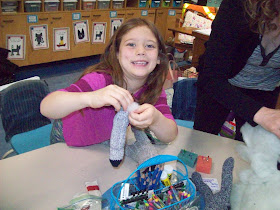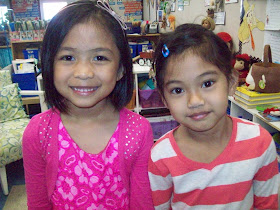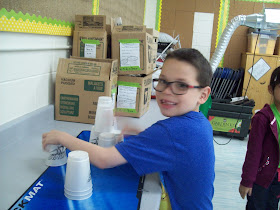Remember that cute little monkey that has been at the base of all our Language Learning lessons this month, the 75 year old Curious George? Today the students got a chance to make their own little monkeys, using a pattern that's been around for a long time:
These socks were originally made by the Nelson Knitting Mills in Rockford, Illinois (hence the name) since 1890, and patented in 1915. When the company decided to include sock monkey instructions with every pair of the Red Heel® socks in the 1950’s, the true marketing magic began.
The pattern was published in a craft magazine in 1955, and in 1958, the first book dedicated to sock monkeys was published. By then, elephant instructions were published as well, and sock monkeys became an important part of every American childhood.
As with every activity that we do, there is always a tie-in to an academic outcome. Tomorrow, the students will look back at the pattern that I will provide for them and they will be writing out the directions on how to make these monkeys. There will be an opportunity to revisit the new vocabulary that we learned, and remember which steps come first, second and so on!
Thanks to the two mommas, and two grandmas who came in to help. We never could have managed without them! There were challenges along the way:
a) how to turn a sock right-side out
b) how to stuff the batting right to the tip of the tail
c) how to pin the different body parts onto the body (without drawing blood!)
d) how to use a needle and thread, without getting it all tangled up
e) how to make the pair of socks actually look like a monkey!
Probably my favourite line was from a little girl after her monkey was complete. She looked at her monkey and exclaimed, "How did we ever do this?"
Each and every monkey, whether it was made from a pair of men's work socks, a pair of socks that a child in grade two would wear, a pair of fuzzy socks or a pair of colourful stretchy knee socks, was finally completed, with google eyes and a colourful ribbon added.
Just because I have nothing to do at night (ha! ha!) each monkey also got a little gift of a flannelette blanket (with sock monkeys on it) and a little cup to sip on before bedtime. It will, hopefully, be one of those days that the students in my class remember for a long, long time.
The other exciting event today was our Cup Stacking Tournament. There were three possible areas to enter in:
a) singles
b) pairs
c) teams
We had lots of winners today! The gals above won first place in the pairs competition for Grades 1 and 2,
here's the 2nd place pair,
and here's the third place pair.
Yes! You saw right...Grade Two Girls Rule!
Here's the first place team for the teams challenge for Grades 1 and 2,
and the second place team in the same division. Great job kiddos!
In case you're not sure of what cup stacking is, here's a couple of my kiddos as they were practising last week. The best part was the perseverance that they learned....never give up!































